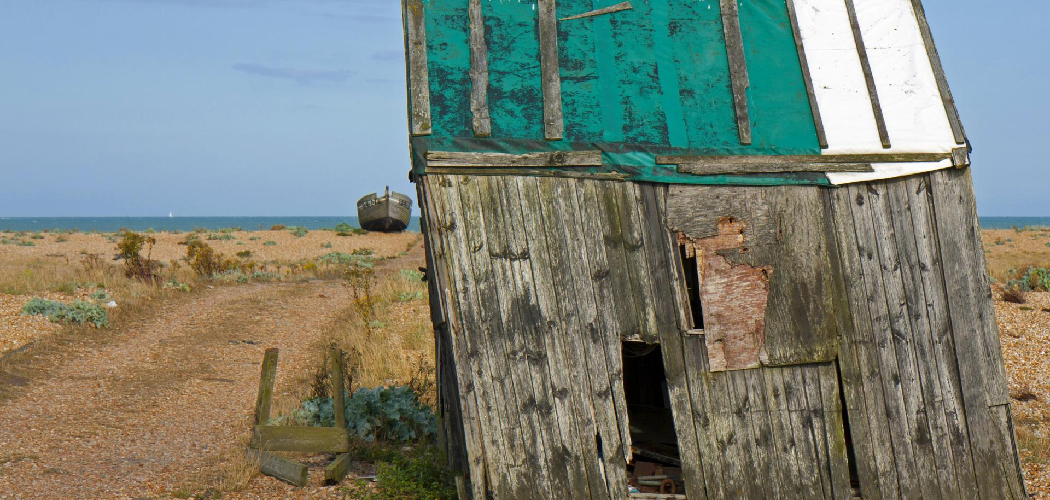Taking down a wooden shed can be a challenging but necessary task for various reasons, whether you’re making room for a new structure, dealing with a deteriorating shed, or simply need to clear space in your yard.
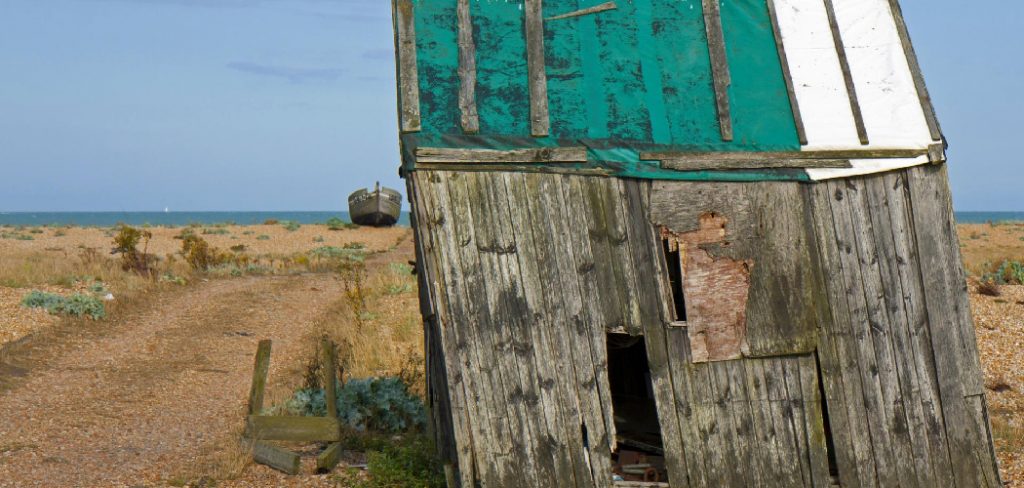
This article will provide you with a step-by-step guide on how to take down a wooden shed. You’ll learn the essential tools and equipment needed for the job, the preparation steps, and the systematic process of deconstruction.
Whether your shed is a small storage unit or a larger structure, the principles discussed here can be applied to ensure a successful shed takedown. From removing the roof and walls to handling the shed’s foundation, you’ll gain the knowledge and confidence to tackle this DIY project effectively, giving you the space and freedom to embark on new outdoor ventures.
Reasons for Taking down a Wooden Shed
Before we dive into the steps for taking down a wooden shed, let’s first discuss some common reasons why you may need to do so.
- Making room for a new structure: Perhaps you want to install a larger or more functional shed, or maybe you’re converting your yard into an outdoor living space and need to remove the existing shed.
- Dealing with a deteriorating shed: Over time, wooden sheds can start to rot or become damaged due to weather conditions, pest infestations, or general wear and tear. In this case, it may be safer and more cost-effective to take down the shed rather than trying to repair it.
- Clearing space in your yard: If you have a shed that is no longer being used, taking it down can free up valuable space in your yard for other purposes.
Benefits of Dismantling a Shed Instead of Demolishing
When it comes to taking down a wooden shed, you have two options: dismantle or demolish. While demolition may seem like the quicker and easier option, there are several benefits to dismantling a shed instead. Here are some reasons why you should consider dismantling your wooden shed instead of demolishing it.
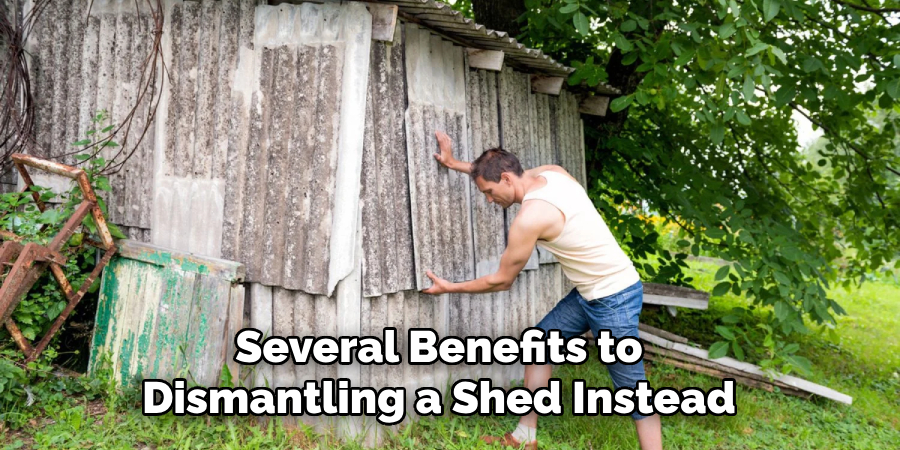
1. Reusability
One of the biggest benefits of dismantling a shed is that you can reuse the materials for other projects. This not only reduces waste, but it also saves you money in the long run. The wood from your old shed can be repurposed for various DIY projects such as building a new shed, making furniture, or even creating garden decorations. By dismantling your shed, you are not only reducing your carbon footprint but also getting the most out of the materials you already have.
2. Cost-effective
In addition to reusability, dismantling a shed is also a more cost-effective option compared to demolition. Demolition often requires specialized equipment and labor, which can be quite expensive. On the other hand, dismantling a shed can easily be done with basic tools such as hammers, screwdrivers, and saws. This allows you to save money while still achieving the same end result.
3. Safer for the environment
Demolishing a shed may seem like a quick and easy solution, but it can have negative impacts on the environment. The debris and waste from demolition often end up in landfills, contributing to pollution and harming the ecosystem. By dismantling your shed, you are reducing the amount of waste produced and minimizing your impact on the environment.
10 Methods How to Take Down a Wooden Shed
1. Gather the Necessary Tools
Before attempting to take down a wooden shed, it is important to have the right tools. This includes a hammer, screwdriver, saw, pry bar, and safety goggles. It is also important to have a ladder or scaffolding for reaching higher areas of the shed. Additionally, having someone to help you will make the job easier and safer.
2. Remove Any Loose Items
Before taking down a wooden shed, it is important to remove any loose items, such as shelves or bins, that may be inside. These items can easily become damaged during the demolition process and should be set aside in a safe place until the project is complete.
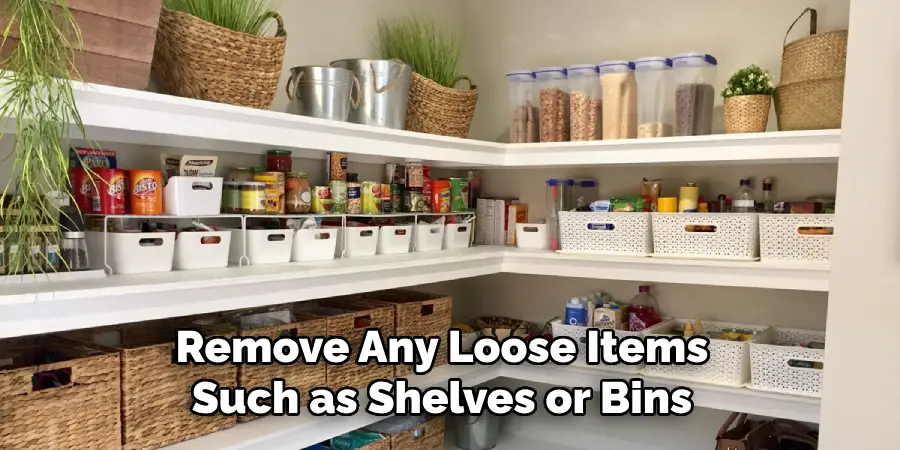
3. Disconnect Utilities
If your wooden shed has any utilities connected, such as electricity or plumbing, these should be disconnected before beginning demolition work. This will help to prevent any damage from occurring due to water or electrical lines being cut during the process.
4. Remove Doors and Windows
The next step in taking down a wooden shed is to remove all of the doors and windows from the structure. This can usually be done by unscrewing them from their frames using a screwdriver or drill bit. Once they are removed, they should be stored in a safe place until they are needed again for future projects.
5. Take Down Siding
Once all of the doors and windows have been removed from your wooden shed, it’s time to start taking down its siding panels one by one starting at the top and working your way down towards the bottom of the structure. Use caution when removing each panel, as some may contain nails that could cause injury if not handled properly.
It is best to use a hammer and pry bar when removing each panel so that you don’t damage them too much in the process. Be sure to wear safety goggles while doing this step as well since pieces of wood can fly off when being taken apart!
6. Dismantle Roofing Materials
The next step in taking down a wooden shed involves dismantling its roofing materials, such as shingles or metal sheets that cover its top surface area. This can usually be done by unscrewing them from their frames using either a screwdriver or drill bit, depending on what type of fasteners were used originally for installation purposes (e..g., screws vs nails). Once all of these materials have been removed, it’s time to start taking apart its frame components which will include its rafters and trusses (if applicable).
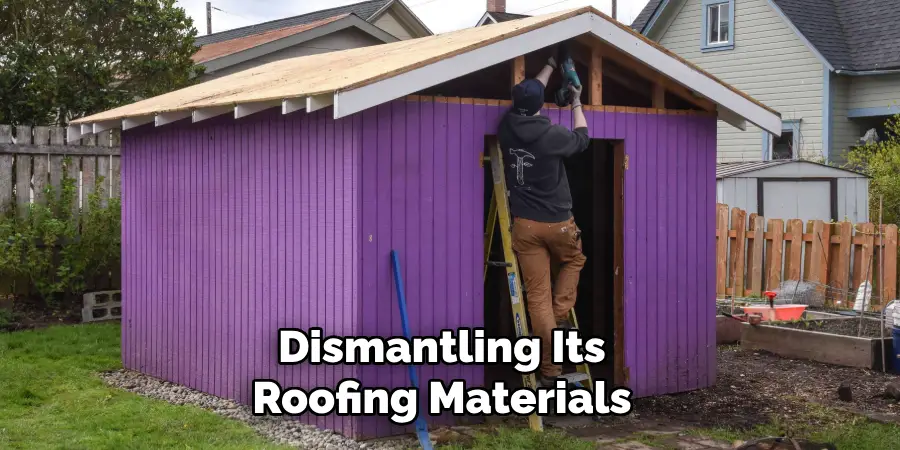
7. Take Apart Frame Components
This step involves carefully disassembling each component piece-by-piece starting with its rafters (horizontal beams) and then moving onto its trusses (vertical supports). When doing so be sure not to damage any other parts of your structure since this could potentially weaken its overall integrity once reassembled elsewhere later on if necessary!
To make things easier try using an electric saw which can quickly cut through wood without causing too much damage in most cases however, always exercise caution no matter what tool you decide to use here!
8. Separate Lumber Pieces
Once all of your frame components have been taken apart, it’s time to separate out each individual lumber piece so that you can easily transport them away from your property after demolition has been completed successfully! To do this, simply lay out each piece on an open area nearby where there won’t be any obstructions present, then begin sorting through them one by one until everything has been separated accordingly!
9. Dispose Debris Properly
After everything has been sorted out, it’s finally time for disposal – but before getting rid of anything, double-check with local authorities first regarding what types of debris are allowed within their jurisdiction (some cities/towns may require specific types only!). Once approved, go ahead and bag up all remaining debris, then transport it away safely where it can be disposed of according to regulations set forth by local governments!
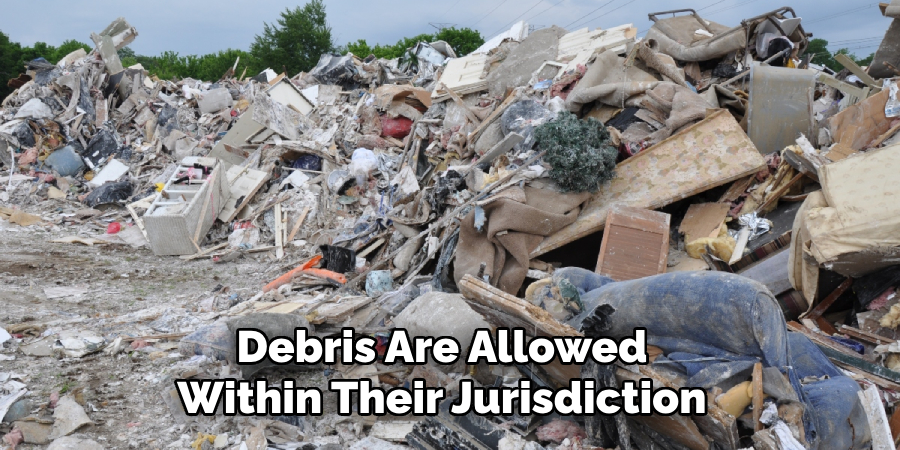
10. Clean Up Site
The last step in taking down a wooden shed involves cleaning up any mess left behind after demolishing your structure! Begin by sweeping up leftover sawdust/wood chips, then move on to picking up larger pieces such as nails/screws etc. Finally, hose down the entire area making sure there aren’t any lingering particles still present before declaring the job finished!
Things to Consider When Taking Down a Wooden Shed
Taking down a wooden shed may seem like a daunting task, but with proper planning and preparation, it can be done efficiently and safely. Before beginning the process, there are several important factors to consider.
Location and Accessibility
The location of the shed is a crucial factor to consider when planning its takedown. If the shed is located in a tight or hard-to-reach space, it may require additional tools or equipment for removal.
You should also consider if there are any obstacles such as trees, power lines, or fences that could hinder the process. It is essential to have a clear path for removing the shed’s materials without causing damage to surrounding structures.
Size and Materials
The size and materials of the shed will also play a significant role in its takedown. Larger sheds may require more manpower and specialized equipment, while smaller sheds can potentially be taken down by hand.
It is also essential to consider the type of wood used in the construction of the shed. Softwoods, such as pine or cedar, are easier to dismantle than hardwoods like oak or maple. Additionally, if the shed contains any hazardous materials such as asbestos or lead paint, special precautions must be taken during removal.
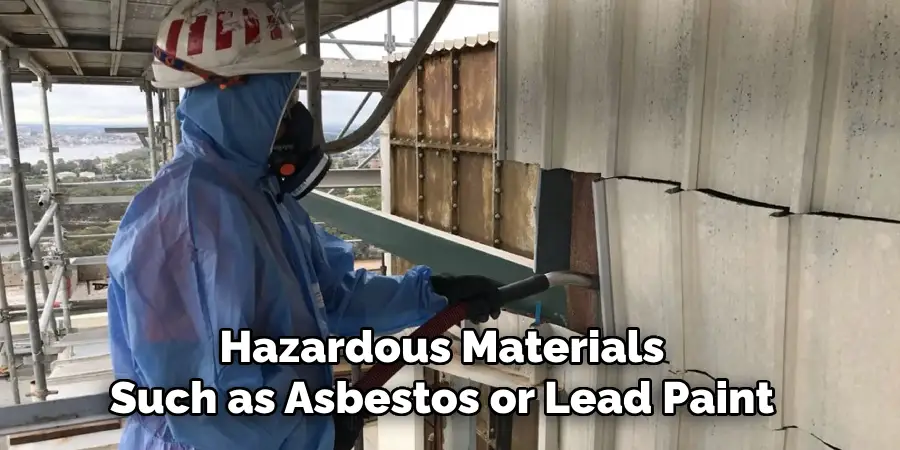
Tools and Equipment
Having the right tools and equipment is crucial for a successful shed takedown. Some essential tools include hammers, screwdrivers, crowbars, and saws. Depending on the size and complexity of the shed, you may also need heavy-duty equipment such as a circular saw or reciprocating saw. It is important to have proper safety gear, including gloves, eye protection, and sturdy footwear when using these tools.
Conclusion
Ultimately, the process of taking down a wooden shed can be intimidating. However, if you make sure you have all the materials you need and make safety your top priority, you will be able to get it done quickly and efficiently. If at any point during the process you feel overwhelmed or confused, remember that professional help is available. It’s important to figure out what kind of help you need in order to complete the job safely and properly.
Taking on this type of project can be rewarding when completed successfully and set you up for many successful home projects in the future. Now that we’ve gone over every step and provided answers for commonly asked questions about how to take down a wooden shed, we hope that we’ve given you enough information so that your dismantling job goes smoothly.
All that’s left is providing some final words of advice before sending into action: always prioritize safety first and remember never give up! Good luck with your project!

